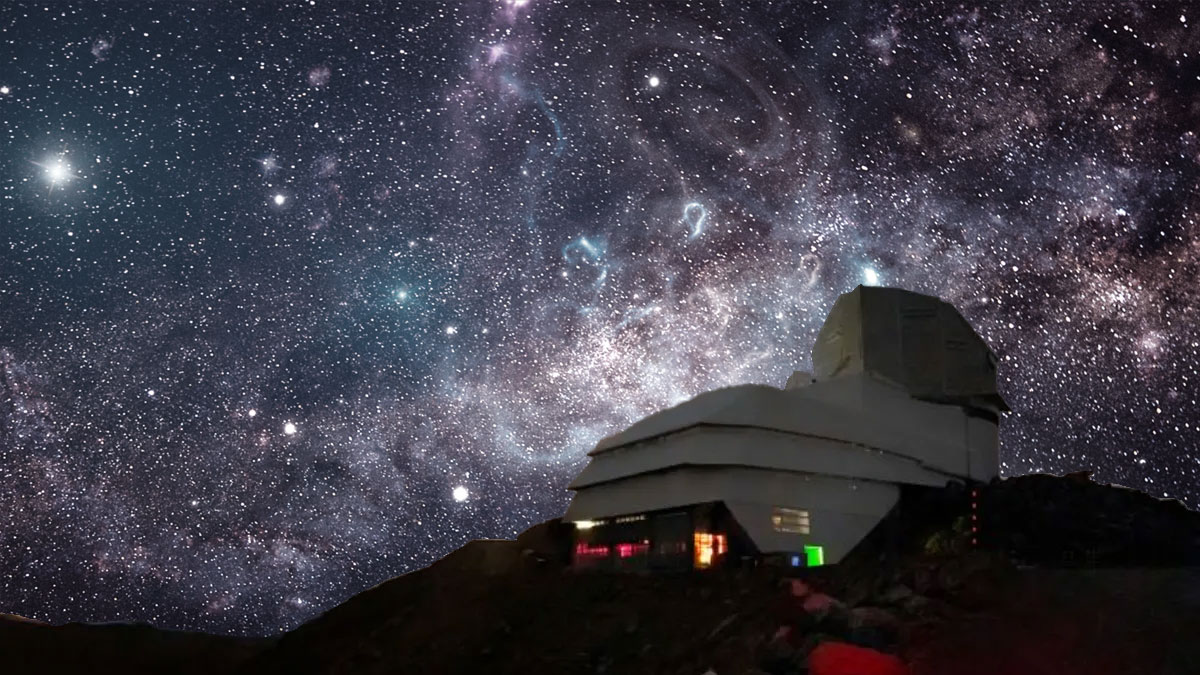One of the most ambitious astronomical surveys in human history is set to begin on Monday. Vera Rubin Observatory, an astronomical observatory in Chile, will conduct the Legacy Survey of Space and Time (LSST), during which it will use the 3200-megapixel LSST Camera — the largest camera ever built — to image a different region of the southern hemisphere sky about every 40 seconds.
Poised to revolutionise our understanding of the universe, the LSST will capture a full view of the southern sky for ten years, producing a staggering 60 petabytes of image data—and potentially rewriting modern astronomy.
At the heart of this survey is a technological marvel: a 3.2-gigapixel camera, the largest digital camera ever built. Weighing 2,800 kilograms and mounted on the 8.4-meter Simonyi Survey Telescope, this camera will scan the heavens using six filters sensitive to light from the ultraviolet to the near-infrared.
Each night, it will generate 20 terabytes of data — equivalent to three years of continuous HD video — and uncover more than a thousand new celestial phenomena.
“The real challenge isn’t just capturing the data,” said project director Željko Ivezić. “It’s confirming and acting on what we find, sometimes within minutes.”
Teams across the globe are preparing the infrastructure to respond to this flood of information with unprecedented speed. Alert systems, scientific catalogs, and public image releases are all in place to ensure swift analysis and response.
Originally known as the Large Synoptic Survey Telescope when it was proposed in 2006, the project was later renamed in honor of astronomer Vera C. Rubin, whose work confirmed the existence of dark matter.
Funded by the US National Science Foundation and the LSST Corporation, the observatory is located atop Cerro Pachón in Chile’s Andes Mountains, about 100 kilometers from La Serena.
The LSST will address some of the most fundamental questions in astrophysics:
What is the nature of dark matter and dark energy?
How do galaxies and cosmic structures form and evolve?
What is the structure and origin of our solar system?
What kinds of explosive and fast-changing phenomena occur in the universe?
To tackle these questions, scientists have formed focused collaborations in areas such as dark energy, galaxy evolution, solar system science, and stellar variability.
Together, they aim to extract scientific breakthroughs from what promises to be the most detailed map of the night sky ever created.
During its decade-long run, the LSST is expected to collect over two million images. When processed, this data will exceed 500 petabytes in size, cataloging nearly 17 billion stars, 20 billion galaxies, and millions of transient events—such as supernovae, asteroids, or mysterious new cosmic flashes.
To handle this immense data stream, supercomputers in the United States, France, and the UK will perform up to 40 trillion calculations per second.
Within minutes of observation, the Rubin Observatory will issue public alerts for any transient events detected. Full catalogs and images will follow, becoming available within 24 to 80 hours to those with data access.
One of LSST’s most transformative contributions will be its unprecedented ability to detect transient events—phenomena that appear or change rapidly.
Every night, the system is expected to generate about 10 million alerts. To manage this deluge, an “alert broker” network will tag, categorize, and compare events with existing records, providing astronomers worldwide with early insight into potentially groundbreaking discoveries.
From identifying Earth-threatening asteroids to revealing unknown planets beyond Neptune, the LSST is poised to leave a lasting mark on astronomy.
Its reach will extend far beyond what even the Hubble or James Webb telescopes have achieved — offering not only a deeper look into the cosmos but also a more dynamic one.
With anticipation mounting in the global astronomy community, all eyes are now on June 23, 2025 — the day the LSST camera will see its first light and begin a new era of cosmic discovery.
Syed Ashraf Uddin is an adjunct faculty at American Public University System and associate member of Center for Astronomy Space Science and Astrophysics at Independent University, Bangladesh


